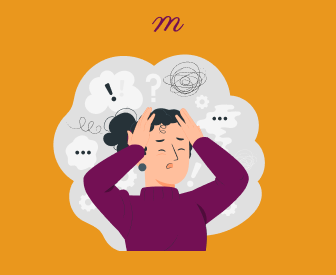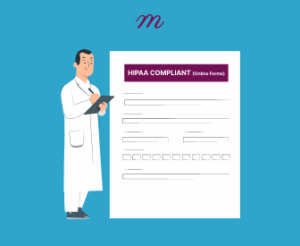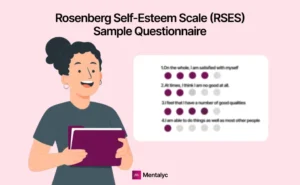The Hamilton Anxiety Rating Scale (HAM-A) is a cornerstone tool for assessing anxiety. By meticulously evaluating both psychological and physical symptoms, it offers a precise snapshot of a client’s anxiety level. While not without limitations, the HAM-A empowers clinicians to track progress effectively. But our exploration doesn’t end here! Stay tuned as we delve deeper into the secrets of the Hamilton Scale, equipping you to guide clients towards conquering anxiety.
The Origins and Development of the Hamilton Anxiety Rating Scale (HAM-A)
The HAM-A assessment tool, developed by psychiatrist Max Hamilton in 1959, has been a game-changer in evaluating both physical and psychological symptoms of anxiety. With limited methods to assess anxiety at the time, the HAM-A was a groundbreaking resource, and it continues to be a trusted tool in clinical and research settings today. Its accuracy and credibility have been acknowledged across various ages, making it an unparalleled tool for measuring the severity of anxiety symptoms, evaluating the effectiveness of anxiety treatments, and informing clinical decisions. Previously, the clinician would complete the HAM-A, but now, it can be administered through an interview or by having the client fill it out themselves.
Using the Hamilton Anxiety Rating Scale in Clinical Practice
The HAM-A assessment tool can be a precious resource for clinicians working with clients who suffer from anxiety. By administering the HAM-A during the initial appointment, therapists can gain crucial insights into the client’s anxiety symptoms and their severity. Therapists can then use this information to create a customized treatment plan that prioritizes the symptom clusters that are most problematic for the client.
As therapy progresses, regular assessments using the HAM-A to track changes in the client’s anxiety levels can help to evaluate the effectiveness of the interventions being used. This progress monitoring can also help identify the most helpful strategies for that particular client.
For clients with GAD or who experience high trait anxiety, the HAM-A may be administered at each session. By comparing the client’s score from week to week, therapists and clients can identify specific triggers that contribute to increased anxiety and work together to develop strategies for managing those triggers more effectively.
Overall, the HAM-A facilitates an open discussion between therapist and client about anxiety symptoms. This shared understanding can provide clients with specific language to describe their bodily sensations, thoughts, and behaviors contributing to their anxiety. It can help therapists develop customized treatment plans that address the client’s unique needs and goals.
Conducting the Structured Interview
We suggest a structured clinical interview to evaluate the 14 anxiety-related items to ensure that the HAM-A is implemented effectively. At least 15-20 minutes should be allocated to administer the tool. During the interview, it is important to inform clients about the various expressions describing anxiety-related feelings and ask them to rate their responses on a scale of 0 to 4. The scale ranges from a lack of symptoms (0) to severe symptoms (4).
The 14 anxiety-related items are as follows:
- Tension: Feelings of tension, fatigability, and inability to relax.
- Fear: Feeling of apprehension or dread without an apparent object of fear.
- Insomnia: Difficulty in falling asleep, broken sleep, or early waking.
- Intellectual: Difficulty in concentration or integrating thoughts.
- Depressed mood: Sadness and gloom.
- Somatic (muscular): Sensations of muscular or skeletal discomfort.
- Sensory: Lightheadedness, feelings of unreality, dizziness, and palpitations.
- Cardiovascular symptoms: Palpitations, headaches, and sensations of warmth, coldness, or numbness.
- Respiratory symptoms: Hyperventilation, sighing, sighing respiration, dyspnea, and choking sensations.
- Gastrointestinal: Symptoms of ‘butterflies,’ indigestion, wind, and stomach pains.
- Genitourinary: Menstrual cramps and other symptoms from reproductive organs.
- Autonomic: Dry mouth, flushing, pallor, and tendency to sweat. After administering the test, you will need to complete the last two questions:
- Behavior at interview: Note fidgeting, restlessness, pacing, or trembling hands.
- Total score: Sum of ratings for each of the 14 items.
Interpreting Scores and Using Them to Modify Treatment
To ensure that your clients are making progress in managing their anxiety, it’s vital to keep track of their total score. This score ranges from 0 to 56 and is based on the ratings of all 14 items. A lower score indicates improvement, while a higher score means that symptoms worsen or the treatment is not working.
For instance, a decrease of 50-60% from the initial score indicates significant progress and may suggest that the client is in remission from their anxiety disorder. However, if the client’s scores are not decreasing or have plateaued over time, it might be necessary to reevaluate the current treatment approach.
Factors such as medication adherence, recent life events, physical health issues, or other barriers could prevent progress. To get the client back on track, consider changing medications, increasing the frequency of therapy sessions, or implementing lifestyle changes.
Valuable Tips for Conducting the HAM-A Interview
Completing a structured interview with compassion and clarity is crucial to properly scoring your client’s anxiety level using the HAM-A scale. This technique not only helps you gain valuable insights into your client’s experience, but it also helps you build rapport and show your commitment to understanding their situation on a human level. It’s important to remember that as you gain experience, you will become better at probing for further details and identifying inconsistencies in your client’s answers.
- Be careful not to lead your clients into describing symptoms that aren’t present or underreporting the severity of their anxiety.
- During the interview, explain to your clients that there are no right or wrong answers.
- Throughout the interview, you must remain nonjudgmental and empathize with your clients.
- Taking notes during the interview can be helpful when allotting scores for each item on the HAM-A scale.
Advantages and Limitations of the HAM-A
Understanding the strengths and limitations of the HAM-A when assessing anxiety is important. This will ensure that we’re providing optimal care for our clients.
One of the most significant advantages of the HAM-A is its ability to quickly assess a wide range of anxiety symptoms, including both psychological and somatic symptoms. The straightforward scoring system allows clinicians to obtain a total score quantifying the patient’s overall anxiety severity. This standardized approach is helpful for consistency across clinicians and settings. Additionally, the tool is sensitive to changes in anxiety levels over short periods, making it valuable for monitoring treatment progress and outcomes.
However, we must also consider the limitations of the HAM-A. It relies heavily on subjective patient self-reporting or practitioner observations, which can lead to inaccuracies. It doesn’t distinguish between different types of anxiety disorders, so it may not be appropriate for assessing specific disorders. Furthermore, it’s not well-suited for detecting changes in mild or moderate anxiety. Additionally, the HAM-A primarily focuses on physical symptoms of anxiety, overlooking some cognitive and behavioral aspects. Finally, some symptoms measured by the HAM-A can also occur in depression, making it challenging to distinguish between anxiety and depression in all cases.
When considering the usage of the HAM-A tool in your practice, it’s crucial to assess its benefits and limitations and evaluate how they align with your specific needs. It’s worth noting that alternative measures, such as the Social Interaction Anxiety Scale (SIAS) or the Generalized Anxiety Disorder 7-item (GAD-7), may provide more detailed and precise assessments for certain clients as they are focused on specific disorders. By thoughtfully evaluating all available tools, you can determine the best approach to assess and treat each client in a personalized and effective manner.
Conclusion
The HAM-A is a powerful tool that has transformed the assessment and treatment of anxiety. By using this scale to evaluate anxiety levels, clinicians can gain valuable insights into their clients’ struggles and track treatment progress over time. While no assessment tool is perfect, the HAM-A has proven to be a gold standard in the field. By incorporating this tool into your clinical practice and using it collaboratively with other assessments, you can provide optimal care for your clients and help them achieve a better quality of life.
Discover the key to effortlessly precise progress notes with a complimentary trial of our HIPAA-compliant, AI-driven notes software. Say goodbye to burnout and embrace the path to elevating your counseling practice!
Some Commonly Questions About the Hamilton Anxiety Scale
Everyone has questions about the HAM-A. Here are some of the most common ones:
How is the HAM-A scored?
Each of the four items is scored on a scale of 0 (not present) to 4 (severe), with total scores ranging from 0 to 56. Scores of less than 17 indicate mild anxiety, 18 to 24 mild to moderate anxiety, and 25 to 30 moderate to severe anxiety. Scores over 30 indicate severe anxiety.
How is the HAM-A administered?
The HAM-A is administered through a structured clinical interview. A trained clinician asks the client a series of questions to determine the severity of their anxiety symptoms. The clinician observes the client’s behavior and rates the severity of symptoms based on the client’s responses and the clinician’s observations.
How often is the HAM-A used to monitor treatment progress?
The HAM-A is commonly used to assess a client’s anxiety severity at intake and regularly after that to monitor changes in symptoms and evaluate treatment progress. Clinicians often administer the HAM-A at each session to determine if anxiety levels are decreasing, staying the same, or worsening throughout treatment. Changes in HAM-A sores help clinicians adjust treatment plans as needed.
Is training required to administer the HAM-A?
Proper training and experience are required to administer and interpret the HAM-A accurately. Clinicians should learn structured clinical interviewing techniques and receive education on the HAM-A, including definitions of each item and examples of the range of severity. Supervised practice in administering the HAM-A is also recommended. With adequate training, psychiatrists, psychologists, social workers, counselors, and other mental health professionals can use the HAM-A effectively.
What are the advantages and limitations of the HAM-A?
The HAM-A is a well-established measure with proven reliability and validity. It is easy to administer and provides clinically useful information about anxiety severity and treatment progress. However, it does not assess specific anxiety disorders and may be less sensitive to changes for some disorders. The HAM-A also relies on clinician ratings, which can be subjective. Despite these potential limitations, the HAM-A remains one of the most widely used anxiety assessment scales.
Resources:
World Health Organization (WHO). (2023, September 27). Anxiety Disorders. h tps://www.who.int/news-room/fact-sheets/detail/anxiety-disorders
Anxiety and depression Association of America. (2022, October 22).Anxiety Disorders – Facts Statistics. https://adaa.org/understanding-anxiety/facts-statistics
Huntsman, D. (2023, May 23).The Hamilton Anxiety Rating Scale. Integrative Therapeutics®. https://integrativepro.com/blogs/articles/hamilton-anxiety-rating-scale
Ohwovoriole, T. (2024, January 23).How the Hamilton Anxiety Scale Is Used. Verywell Mind. https://www.verywellmind.com/hamilton-anxiety-scale-7975605
Porter, E. Chambless, D. L., McCarthy, K. S., DeRubeis, R. J., Sharpless, B. A., Barrett, M. S., Milrod, B., Hollon, S. D, & Barber, J. P. (2017). Psychometric Properties of the Reconstructed Hamilton Depression and Anxiety Scales. Journal of Nervous & Mental Disease, 205(8), 656-664. https://doi.org/10.1097/nmd.0000000000000666
Psychology Tools. (2024)Hamilton Anxiety Rating Scale (HAM-A). https://psychology- ools.com/test/hamilton-anxiety-rating-scale
Why other mental health professionals love Mentalyc

“I benefit tremendously every time I wrap up a session and then a few minutes later, I have this AI note … it makes me a better clinician in a variety of ways.”

“I go back and can read the notes, and it really helps me for the next session … it has made me a much better counselor.”
Licensed Professional Counselor

“It immediately changed my quality of life, personally and professionally. I went from 3–4 hours a week of notes to 1 hour at most … that alone is invaluable personally and professionally.”
Owner/Independently Licensed Marriage & Family Therapist (IMFT)

“Do yourself a favor, make your life easier. Use the tools that are readily available … I found Mentalyc to be one of the best tools that I’ve ever used.”
Licensed Marriage and Family Therapist






